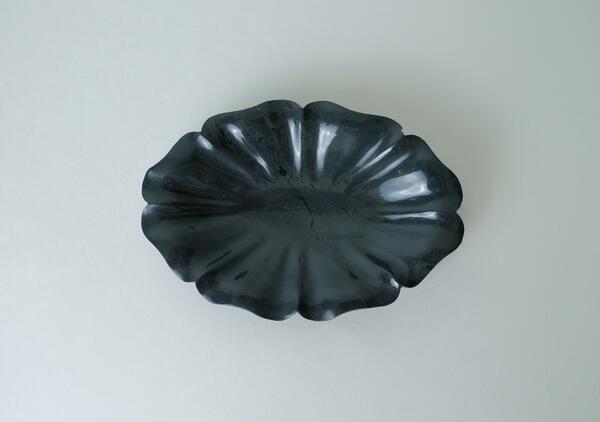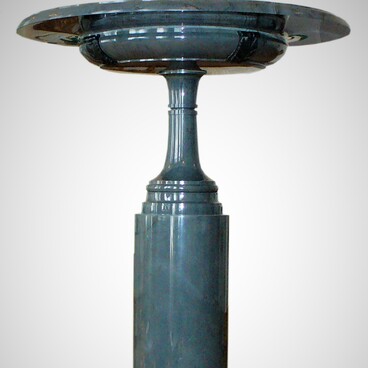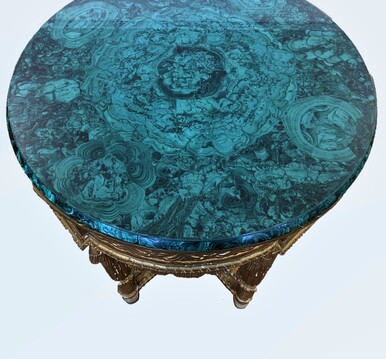Since the mid-1850s, during the all-Russian financial crisis, the number of large orders at the Yekaterinburg Lapidary Factory decreased. In 1865, the Cabinet of His Imperial Majesty was even going to shut it down it or lease it. But “all stone lovers of St. Petersburg and the Urals” came out in defense of the enterprise. The manager was obliged to draw up and send to St. Petersburg an inventory, which took into account all the “offcuts and drilling-outs”, from which it was possible to create small objects. At that time, the natural beauty of the stone faded into the background, and customers mainly valued in stone artworks the skill of the master.
The collection of the Museum of Stone-Cutting and Jewelry Art presents several exhibits of that period. Many of them are reduced in size replicas of interior décor items of the early 19th century: paired candlesticks on column-shaped stands, bowls on cubic pedestals, hemispherical vases with a faceted body.
One of these exhibits is a wavy-edged tray made from a single piece of Kalkan jasper. This stone was distinguished from other varieties by a monochromatic grayish-green color.
Kalkan jasper was mined on Mount Sabinda near Lake Kalkan in Bashkiria. For the first time, deposits of stone were discovered there in the 18th century. The reserves turned out to be quite large, the jasper lay at the top, so mining was established quickly and was quite easy. The Kalkan stone was considered very valuable: due to its uniform structure and color, there was little waste during processing, and the finished products were durable and did not wear out over time. Huge monoliths were often found in the deposit, which made it possible to produce large objects from a single piece.
In 1875, the Yekaterinburg Imperial Lapidary Factory sent an entire expedition to the shores of Lake Kalkan, which delivered from there about five thousand poods of jasper — about 80 tons. Among them there were also monoliths weighing more than six tons.
Nowadays, jasper is no longer mined at the Kalkan deposit. Only abandoned quarries remain in the place of the former mines on the slope of the mountain: now they are overgrown with birches and bushes.
The collection of the Museum of Stone-Cutting and Jewelry Art presents several exhibits of that period. Many of them are reduced in size replicas of interior décor items of the early 19th century: paired candlesticks on column-shaped stands, bowls on cubic pedestals, hemispherical vases with a faceted body.
One of these exhibits is a wavy-edged tray made from a single piece of Kalkan jasper. This stone was distinguished from other varieties by a monochromatic grayish-green color.
Kalkan jasper was mined on Mount Sabinda near Lake Kalkan in Bashkiria. For the first time, deposits of stone were discovered there in the 18th century. The reserves turned out to be quite large, the jasper lay at the top, so mining was established quickly and was quite easy. The Kalkan stone was considered very valuable: due to its uniform structure and color, there was little waste during processing, and the finished products were durable and did not wear out over time. Huge monoliths were often found in the deposit, which made it possible to produce large objects from a single piece.
In 1875, the Yekaterinburg Imperial Lapidary Factory sent an entire expedition to the shores of Lake Kalkan, which delivered from there about five thousand poods of jasper — about 80 tons. Among them there were also monoliths weighing more than six tons.
Nowadays, jasper is no longer mined at the Kalkan deposit. Only abandoned quarries remain in the place of the former mines on the slope of the mountain: now they are overgrown with birches and bushes.



